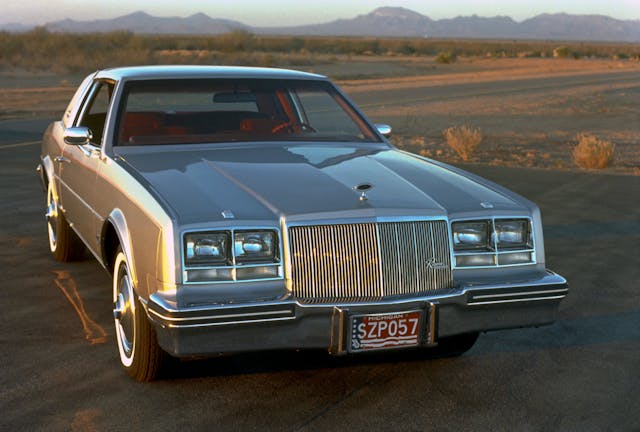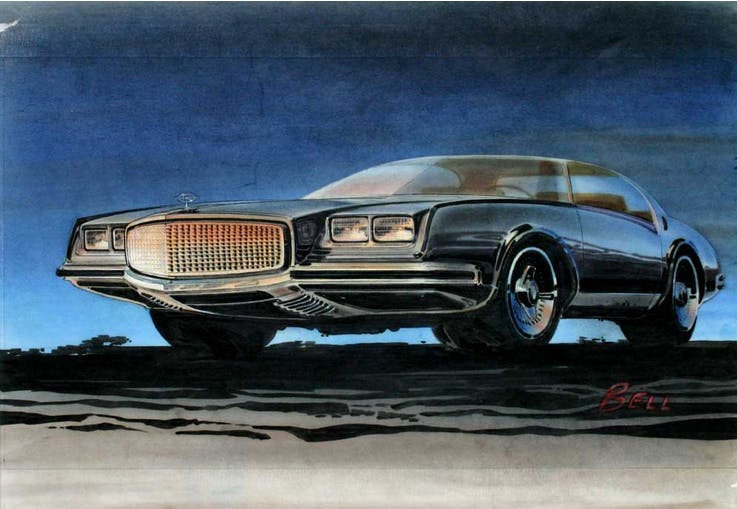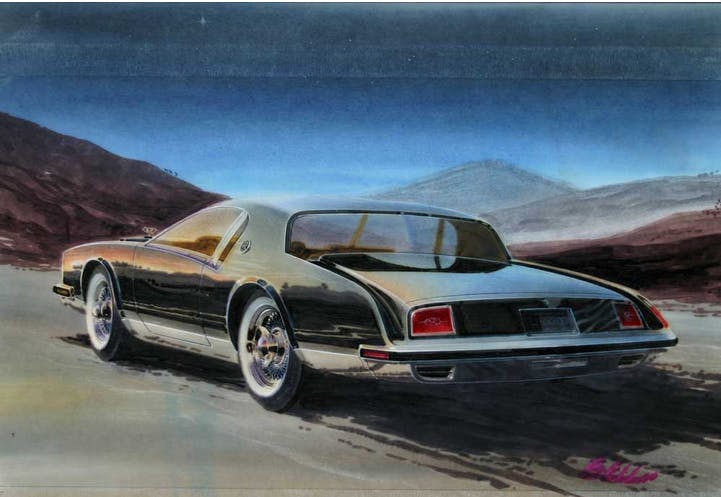Media | Articles
Choosing a Buick for the end times, and a chat with the designer
If you’re looking for a silver lining in today’s clouds, consider this: The 1979 Buick Riviera, a baroque design, conceived during the dark days of the first gas shortage, may now be the perfect classic car to ride out the end times in style.
That ’79–85 Riviera and its E-body sisters, the Toronado and Eldorado, were Bill Mitchell’s going-out-in-style hat trick. He didn’t want his last designs to be the equivalent of Earl’s chrome laden ‘fifty-eights, he wanted a winner. (Hold the hate mail; I would love to have a 1958 Buick Limited or Cadillac Fleetwood in my garage). Now some of us are reading the tea leaves of “personal mobility” and thinking … Gosh, maybe I should figure out a way to go out in style, as well.
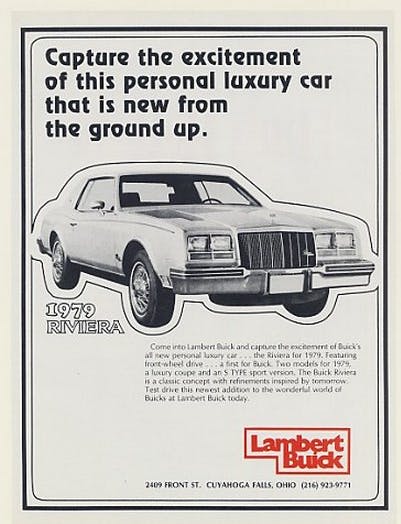
Thankfully, much of the bloodthirsty societal zest for “autonomy” took a break this past year as the elites quickly abandoned mass transit for the safety of their SUVs and headed for their summer homes. After all, who wants to summon an on-demand transport pod after the previous occupant has hacked all over it? Car sales declined then bounced back as the cities locked down, used cars sold quickly and prices rose by a couple of thousand. Previously carless urban sophisticates suddenly had a need to hit the road. In my neck of the woods four grand used to get you a solid daily driver; now it’s a project car of dubious potential.
Even classics sold fast, too much stimulus cash to those who didn’t need it and too much time on their hands between Zoom calls. The joke’s on them, of course; by the time they get the new toy roadworthy owning a private car will be made unaffordable, taxed out of existence or made illegal. Some combination of the above, most likely.
“Oh please, extinguish your hair, its only a few cents a liter, it’s for the environment, the children, the whales, whatever”, I hear you say. Malarkey, they have been threatening us for years, this is the future they think you deserve.
Marketplace
Buy and sell classics with confidence

It’s an electric future but only for the very rich; everyone else will take the bus or walk. Don’t worry, old cars will still exist, the elite will have their pick, purchased at fire sale prices and driven on $13 per gallon gasoline on private roads around gated communities on sunny days.
Things will happen fast but maybe we have a few years or maybe it will only take six months.
Do I throw caution to the wind, stop using the subway and daily drive one of my fun cars while I can still buy high test? Should it be my ’59 Cadillac with tri-power-carbed 390, the Continental Mark IV with the prodigiously thirsty 460. Or I could go hell for leather and commute to work in a Series II 454 powered Excalibur SS, windshield folded down, suitably attired in flying goggles and bomber jacket. The Excalibur is well suited for winter driving too, with excellent ground clearance and twin heater cores under the front seats.
But I couldn’t do it. Two of these cars are terrifying to drive in modern highway traffic and I just can’t subject any of them to street parking, road salt, and the depredations of my city’s nocturnal inhabitants. The Lincoln would be the best choice (but the thirstiest) with four-wheel disk brakes, battering ram bumpers and more steel than an entire parking lot of Kias… it is safe as it feels. Like my dearly departed Toronado XS it is a car I would never hesitate to drive into the city for a meeting, even in the most intimidating blizzard.
The most amazing part of the current pandemic is that, beside still having a job, I get to work in an office and have not been forced to work from home… in my case a pied-a-terre in the city. Instead of taking the interminable subway ride to my desk cube I would prefer to live out the last days of empire surrounded by the once familiar sight and sounds of eight cylinders, chrome, velour and plastic wood.

The question as to what the perfect city classic would be has long occupied my thoughts. The events of the last year have lit a fire under me to come up with an answer. It could not be a prefect low mileage original or full restoration. It had to be something I didn’t have to worry about, a patinaed survivor that would look good enough to bring joy during this dark winter. Something malaise but not too compromised by government edict, easy to park, practical to repair, not so flashy that it will call unwanted attention to itself.
The answer is, of course, Mitchell’s third generation E-bodies. The ’79–85 Riviera and its platform mates, Eldorado and Toronado. Built during a time when the General was still on top of his game. Sure, Mitchell didn’t have such big a canvas to work on, but still he worked magic.
Like Mitchell, my preference was for the Riviera, particularly the 350-Olds-powered 79-80 models. Relatively compact, (16.9 feet long) and fuel efficient (15-20 mpg) the Riviera could be parked easily on my street. The design and size are pleasing without the insolence of its ’71-78 forebears. The FWD configuration is a bonus for the snowy months north of the 49th parallel.
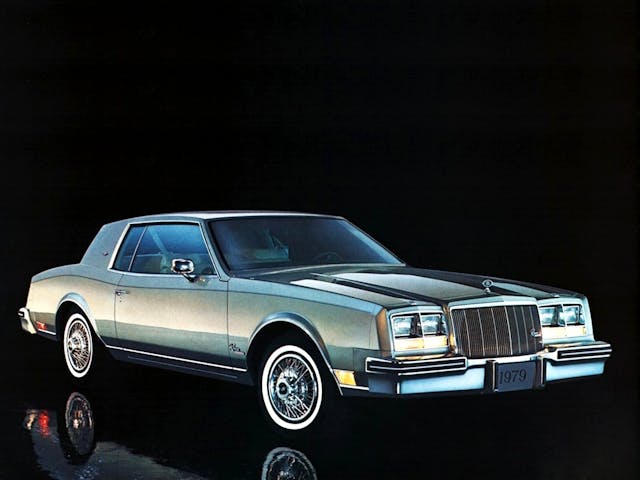
They were special, even when new. I heard from GM designer Richard North that management even tried to kill these best sellers in the cradle. The bean counters thought the corporation was spending too much on “speciality” cars.
It was a bad time, North recalled: “… the worst period of the OPEC gas shortage. GM was laying people off, our cars weren’t selling. Another generation of specialty cars looked like a bad idea.”
Mitchell wouldn’t be denied his legacy, he went rogue and set up a secret design studio behind a double set of locked doors. North was drafted to help create the new generation of personal luxury cars. Other designers wanted nothing to do with the unpopular concept that could cost them their jobs.
“Bill Mitchell wanted these cars to be his design high note to leave on and clearly the Riviera was the one that mattered to him”, said North.
The design for the downsized E bodies started late 1973 and early 1974 so it is no wonder they encompass so much of the Mitchell neo-classic late Sixties/early Seventies styling cues. Just like the introductory product video states the Riviera has the “classic long hood, short deck” look so desired by upwardly mobile Americans from coast to coast.
I previously enjoyed a bustle back Seville and despite the cursed “4.1”, found it to be the perfect size luxury car for a diminished world. Europeans might see these cars as big, but they feel compact to someone who has had a fleet of early seventies Lincolns, Cadillacs, and Imperials.
Pete Estes, president of GM (1974–1981) was the only person allowed through the secure double doors know as the “air lock” to see what was going on in the secret studio. Estes was initially non-committal but eventually came to champion the program, green-lighting its production.
Mitchell’s parting shot might have been born of downsizing and realpolitik but he did not compromise his vision. Of all the prototype images I have seen, the clay mockup of the Riviera is closest to the car that went into production.

As the lights slowly go out on the golden age of the postwar world, I intend to travel the crumbling infrastructure in splendid velour and faux wood as the full frame suspension soaks up the potholes. Like the happy couple in the 1980 brochure illustration, I will watch for the mushroom clouds on the horizon. As the Buick ad said, “At least once in your life you should own a car this incredible.”
I just wish future generations could enjoy it too.
